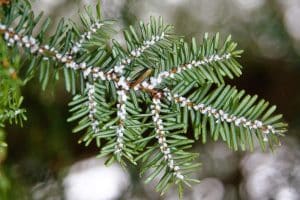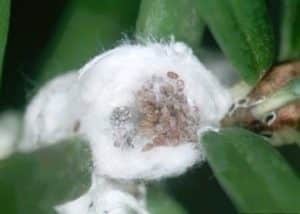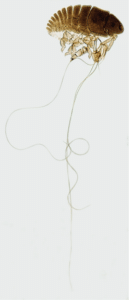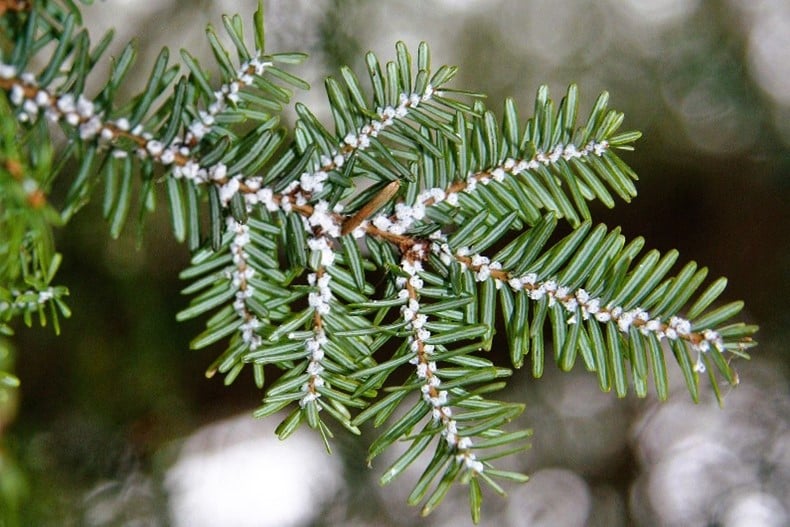Hemlocks are renowned for their striking and graceful presence, adding a touch of elegance to any landscape. In many parts of the United States, hemlocks are declining because of a small, nonnative insect, the hemlock woolly adelgid (Adelges tsugae, Hemiptera: Adelgidae). The hemlock woolly adelgid (HWA) is a small (1.5 mm) insect that was first detected in the early 1950s in eastern North America near Richmond, Virginia. HWA was first detected in New York State in the early 1980s. Since then, it has spread rapidly, leading to hemlock decline and mortality in more than eleven states, from Georgia to Maine. In some areas, mortality has been as high as 95%.
Symptoms
Symptoms consist of discoloration, desiccation, loss of the needles, and dieback of branches. The feeding impact of HWA results in a depletion of the stored nutrients, which compromises the tree’s ability to produce new growth. As the infestation progresses, crown vigor decreases, eventually leading to branch dieback and death of the tree. Feeding by adelgid on new needles leads to progressive needle loss, often first observed in the lower and central portions of tree crowns, then on interior branches and exterior branch tips, and finally at the top of the crowns. As the infestation progresses, visible symptoms include graying needles, dead branches, and canopy thinning. The insects produce a wax-like protective secretion that appears similar in texture to wool, hence their common name. These fuzzy white masses are readily visible at the base of hemlock needles attached to twigs and persist throughout the year.


Insect Life Cycle
Hemlock woolly adelgid has a complicated life cycle, with two generations per year (called sistens and progrediens). Females do not need to mate to reproduce, and each female lays up to 175 eggs that stay within her woolly mass (ovisac). The sistens generation lives for about 10 months, from early summer to the following spring. This generation aestivates, or becomes inactive, during the summer and begins feeding in late fall. The progrediens generation lives about three months, from early spring to early summer. The first instar, or life phase, is called a crawler, and this is the only HWA instar that can move, other than a winged female – all other life stages are sessile (i.e., fixed in one place). Crawlers cannot move far on their own, but they can be carried longer distances by wind, wildlife, or humans. Generally, crawlers move along a branch and find a spot at a needle base. They insert their long, straw-like mouthpart into the hemlock and begin feeding. Once HWA is feeding, they will grow and begin producing the protective wool. When mature, adults lay eggs under the protective wool. The progrediens generation also includes production of winged females, which cannot reproduce in North America.

Management
A key component of HWA management is monitoring and predicting infestation rates. HWA management is focused on reducing HWA populations rather than complete eradication. Broadly, HWA management involves the integrated use of multiple approaches, including chemical control, biological control, cultural treatments, host resistance, and host gene conservation. Treatment decisions will be made considering numerous factors, including rank, infestation level, tree health, available treatment options, and likelihood of success.


